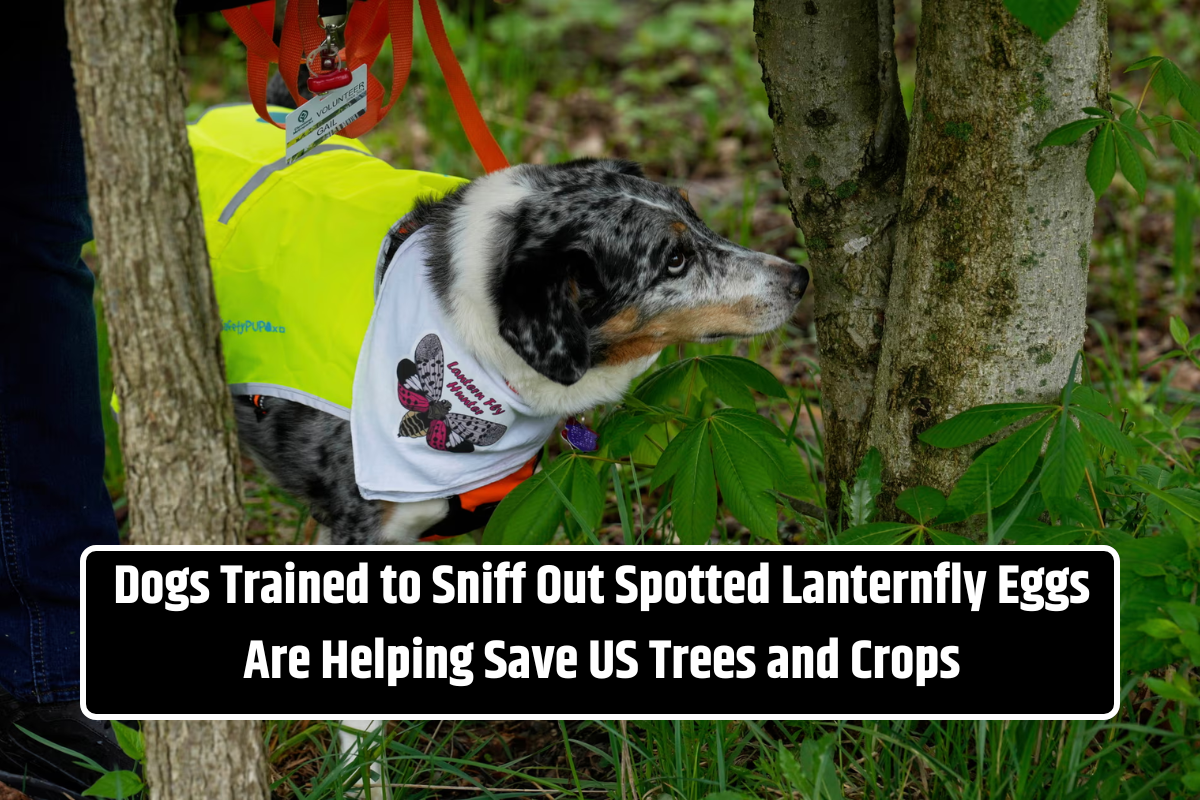In the United States, a small team of specially trained dogs is making a big impact. They are helping to stop the spread of the spotted lanternfly, a harmful insect that has been destroying trees and fruit crops across the East Coast and Midwest.
The spotted lanternfly, native to eastern Asia, is harmless to humans but damaging to plants. It feeds on the sap of over 70 plant species, including grapes, fruit trees, hops, and hardwoods. These insects were first detected in the US about 10 years ago and have been spreading fast. But now, dogs are stepping in to stop them—by sniffing out their eggs.
How Dogs Are Fighting the Lanternfly Invasion
Since late 2024, four scent-trained dogs have been searching for spotted lanternfly egg masses in parks around Cleveland, Ohio. These egg masses are often hidden on trees, rocks, benches, and even vehicles. Each egg mass can hatch up to 50 bugs, so removing them early is key.
So far, the dogs have detected more than 4,000 egg masses. That means they’ve helped prevent nearly 200,000 new lanternflies from hatching, according to Connie Hausman, senior conservation science manager at Cleveland Metroparks.
In just a few hours at the Cleveland Metroparks Zoo, the dogs found around 1,100 egg masses. This work is crucial because once the eggs hatch, it becomes much harder to control the pests.
Not Every Dog Can Do the Job
While all dogs have a strong sense of smell, not all are fit for this job. Dogs need to pass special tests to qualify for this important work.
These dogs were trained through a research program led by Virginia Tech University, with support from Texas Tech University and funding from the US Department of Agriculture. The program, called the Canine Citizen Science Study, worked with dog owners to train their pets to sniff out the eggs.
Meet Flint the Lanternfly Detector
One of the dogs, Flint, a border collie, was trained by his owner Sally Dickinson, who is a student at Virginia Tech. Dickinson tested Flint at the university’s agriculture center, and he proved to be excellent at sniffing out the egg masses.
Dickinson believes all dog breeds can help, saying:
“All dogs can smell. Even flat-nosed (‘smooshy’) dogs can do the job—maybe not in hot weather for long, but they can definitely contribute.”
Why This Matters
Spotted lanternflies lay eggs from late August through November, just before winter. Adult lanternflies die in the cold, but the egg masses survive, making them a key target for stopping the pest’s spread.
Eggs are often laid on:
- Tree trunks
- Park benches
- Telephone poles
- Car undersides
- Outdoor furniture
Because the insects are hard to spot and spread easily, early detection by dogs is proving to be a game-changing method in controlling the pest population.
From the forests of Cleveland to university labs, dogs are becoming unlikely heroes in the fight against one of the most dangerous invasive pests in the US. Their ability to detect spotted lanternfly eggs early is helping save crops, trees, and ecosystems. With more dog owners being encouraged to train their pets for scent detection, this canine-led approach could play a key role in controlling future pest outbreaks.











